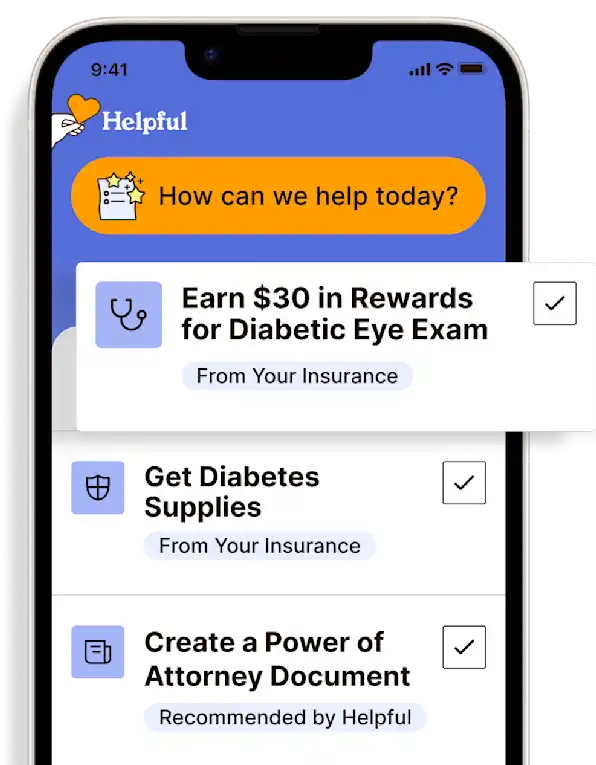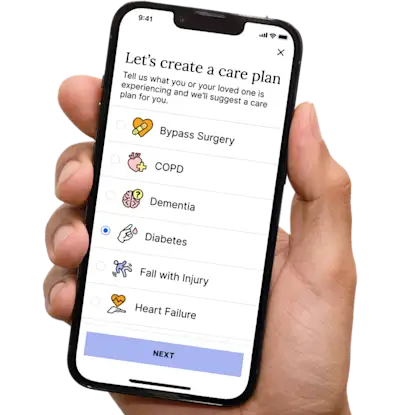Original Medicare (Parts A & B): Eyeglasses and Glaucoma Tests
Eyeglasses are covered for cataract surgery, and glaucoma tests for those at high risk. Glaucoma is a leading cause of blindness in people over 60.
Access all my benefitsGet insurance benefits, legal documents, and medical records in one place
How To Receive
Details on how to apply
Schedule an appointment with a licensed optometrist or ophthalmologist who accepts Medicare. Find an optometrist or opthalmologist near me
When scheduling, let the provider know it is for a glaucoma test or for eyeglasses following cataract surgery.
Attend the appointment and complete the test or fitting.
Follow through with any recommendations or referrals from the provider.
Note that Medicare does not cover routine eye exams or eyewear, and does not cover glaucoma testing as part of a routine eye exam.
For more information on Medicare benefits and coverage, call 1-800-MEDICARE (1-800-633-4227) or visit the Medicare Benefits Website. TTY users, call 1-877-486-2048.
Get more support and guidance on insurance benefits, medical records and legal forms.
Helpful brings together your insurance benefits, legal documents, and medical records in one personalized place — so you always know what you have, and never have to search again.

Eyeglasses
If you or your loved one has cataract surgery with an intraocular lens implant, Medicare Part B covers one pair of eyeglasses with standard frames (or one set of contact lenses).
Note that Medicare will only pay for eyeglasses or contact lenses from a supplier enrolled in Medicare, no matter if you or your provider submits the claim.
Glaucoma tests
Medicare Part B covers glaucoma tests once every 12 months for those at high risk for developing glaucoma. The member is considered at high risk if at least one or more of these conditions applies:
Diabetes
Family history of glaucoma
African American age 50 or older
Hispanic age 65 or older
What is glaucoma?
Glaucoma is a disease that damages the optic nerve, affecting one's ability to see, as well as the general health of the eye tissue. Fluid builds up in the front part of the eye and causes an increase in pressure. As amazing as the eye is, it is rather fragile, and an increase in pressure can cause significant and irreversible damage.
Two types of glaucoma
Open-angle glaucoma. The most common type of glaucoma, it occurs gradually over time. The eye does not drain fluid as well as it should and, as a result, eye pressure builds and damages the optic nerve. This type of glaucoma is painless and vision changes do not occur in the early stages, which is why it's all the more important to get regular eye checks.
Angle-closure glaucoma (also called closed-angle or narrow-angle). This is the less common type of glaucoma and occurs when the iris (the colored part of the eye) is too close to the drainage angle of the eye and ends up blocking the drainage. When the drainage is completely blocked, eye pressure rises rapidly, and is called an acute attack. This is an eye emergency requiring the attention of an ophthalmologist right away - before irreversible blindness occurs. An acute attack is painful and vision changes occur immediately. Symptoms include:
Sudden blurred vision
Severe eye pain
Unusual headache
Nausea and/or vomiting
Seeing rainbow-colored rings or halos around lights
Many people with angle-closure glaucoma develop it slowly. This is called chronic angle-closure glaucoma. There are no symptoms at first, so someone may not know until they have an acute attack. Again, why regular eye checks are so important.
Glaucoma can often be prevented with early treatment, which is why you or your loved one should be getting checked once a year if they are at high risk.
Technology for Health Tasks. Mental Health for the Tough Stuff.
Helpful connects your medical records, insurance, and caregiving tasks automatically. And when you need more than logistics, a therapist is here to guide you.
In-Network and Covered
For Individuals, Couples and Families
HIPAA Compliant, Data Stays Private


Healthcare Tasks Simplified

From syncing records to spotting drug interactions, Helpful does the heavy lifting, turning complex health info into clear tasks and showing you benefits you can actually use, giving you clarity and control over your care.

In-Network Mental Health

Our licensed therapists are here to support you and your loved ones through stress, burnout, and life’s hardest moments, with an inclusive, compassionate approach that works with most insurance plans.

Create Legal Documents

Plan ahead by creating will, trusts, advance directives and more, that ensure your wishes are honored in the event you can’t speak for yourself -with Helpful guiding you every step of the way.